Release time:2025-07-11 16:33:08Clicks:author:SPG ArcheryMain categories:Bows, Arrows, Archery Accessories
In the Song Dynasty, bows and crossbows were very important in military equipment, accounting for more than half of the equipment all year round. Officials at all levels paid attention to the improvement and strengthening of bows and crossbows to enhance their power. The Song Dynasty adopted elaborate methods and built special warehouses to store bows and crossbows to ensure quality. The Song Dynasty developed new composite bows, Shenbi bows, Mahuang crossbows and other weapons, and was good at using crossbows to make them a weapon for attacking, field battles, and defending cities.
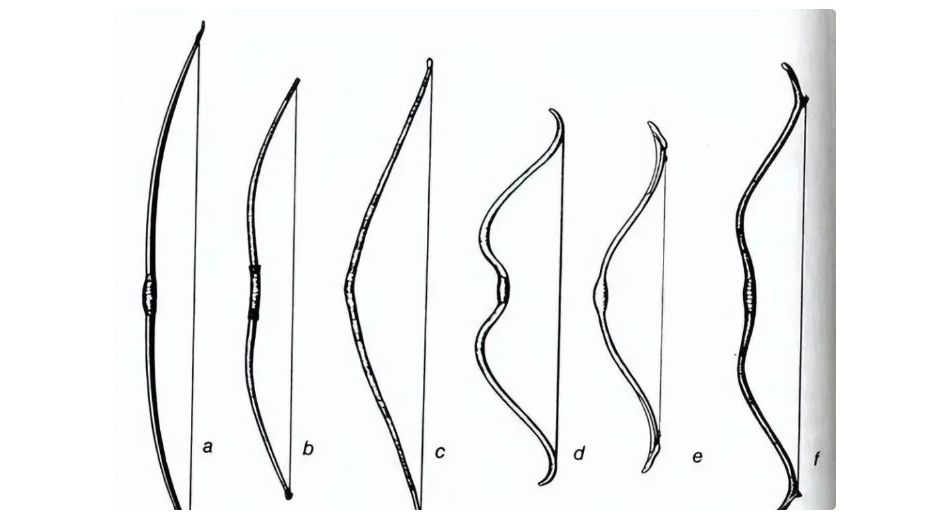
The Song Dynasty inherited the experience of previous generations and continued to develop into a military power. Bows and crossbows played an important role in war and became weapons that determined the outcome of the war. The Song Dynasty fought a hundred battles and developed a strange weapon, and the strong crossbow defeated the enemy. "Bows are domes, and the dome is stretched." The ancients believed that the sky was dome-shaped, which was used to describe the shape of a drawn bow that became like the sky. Bows can store energy to propel arrows.
There are many types of bows, which are now divided into three categories according to the materials used: the single bow body is made of a single material, with a longer size and a general energy storage effect; the two-material composite bow (reinforced bow) is made of different woods and has a stronger energy storage effect, represented by the Japanese and bows; the tendon-horn composite bow uses wood as the bow tire, the bow surface is covered with animal horns, the bow back is covered with animal tendons, and glue is used to strengthen the bow body and improve the energy storage effect. This kind of bow has opposite bending directions when it is strung and unstrung, so it is also called a recurve bow. In Chinese history, the recurve bow made of wood, ox horns and fish intestines was widely used. It has a high range and power and is known as the "bow of all people".
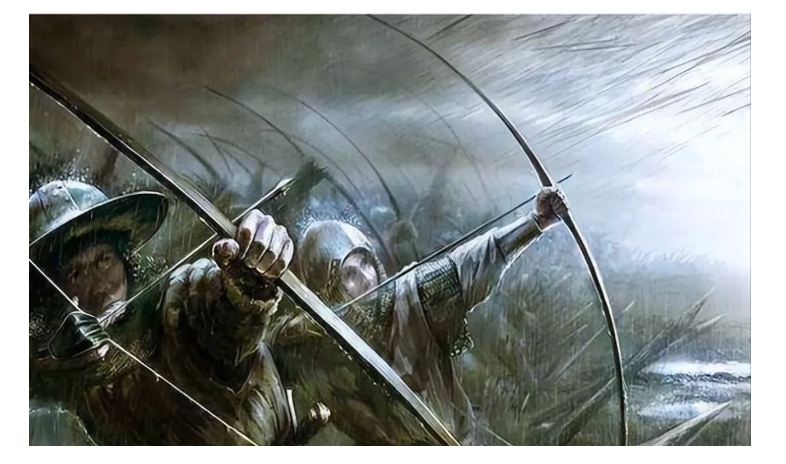
There are many types of bows used by the army of the Song Dynasty, mainly tendon-horn recurve composite bows. In "Wu Jing Zong Yao", four types of bows are recorded: "Its decoration is black lacquer, yellow birch, and hemp back". The appearance decoration of these bows is different in black lacquer, yellow birch, and hemp back. The black lacquer bow is a bow that uses black raw lacquer as surface decoration. In the Southern Song Dynasty, Hua Yue, a military student, highly praised this kind of bow in Cuiwei Beizhenglu, believing that it was better than bows wrapped with yellow birch, peach skin or vermilion because black lacquer bows were waterproof. Therefore, black lacquer bows were widely manufactured and equipped in the Song Dynasty, and were frequently mentioned in historical records: Wenxian Tongkao recorded: "In the eighth year of Kaibao (975)... various states made yellow birch black lacquer crossbows, hemp back bows, plain leather equipment... etc., totaling more than 6.2 million." This item is also recorded in Song History Bingzhi, which shows that the production volume of black lacquer bows was relatively large in the early Song Dynasty. From the records, we can know that black lacquer bows were mostly used in the early Song Dynasty. The Song Dynasty army had a very high demand for black lacquer bows, which was recorded many times in historical records.
In the two memorials in 1057 and 1082, the manufacture and equipment of black lacquer bows were mentioned. The use of black lacquer bows was not invented in the Song Dynasty. It was recorded as early as the Northern Wei Dynasty, indicating that it has a very long history. In addition, the black lacquer process is also applied to other weapons, such as black lacquer lances and black lacquer guns. The yellow birch bow is not made of birch, but birch bark is used to wrap the bow. According to "Wu Jing Zong Yao", yellow birch is more used as a decorative material. Historically, the birch bark used in bow wrapping can make various materials fit more firmly, provide a better feel when holding the bow, and enhance the beauty. Among the materials used for bow wrapping, yellow birch bark is a typical material. As early as the Southern Dynasty Chen period, there was a record of "Hu wearing crimson clothes and birch bark bows".
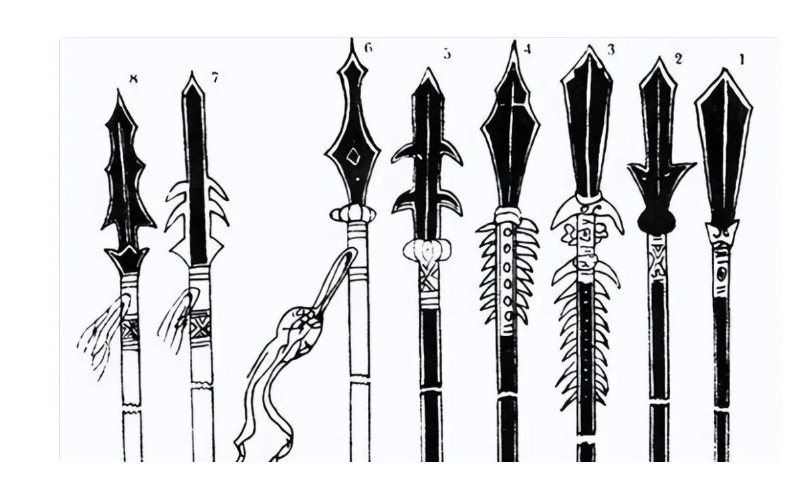
There are also records in the book Tiangong Kaiwu: "Tiangong Kaiwu·Arrow and Arrow" records the role of wrapping the bow with birch bark, "The birch bark is glued to the outside, which is called warm target. All birch trees are produced in Liaoyang outside the Great Wall, Zunhua in the north, Lintao County in the west, and also in Fujian, Guangdong, and Zhejiang. Its skin protects things and feels soft in the hand, so it must be used for bow targets." There are fewer historical materials related to the white birch bow, which is similar to the yellow birch bow, but the type of birch bark used to wrap the bow is different. In the first year of Yuanfeng, Wang Zhongzheng and Di Zi tested the white birch bark long bow and the newly made yellow birch wide flash bow, and tested their performance. Here, the white birch bark long bow is wrapped with white birch bark on the outside of the bow body. There are also fewer records of hemp back bows. From its name, it can be seen that the material used for the bow back should include hemp.
According to "Shuoyuan", "Yanggan hemp tendon bow" may refer to the use of hemp on the bow back to strengthen the bow body. The hemp-backed bows of the Song Dynasty also used the same process, using hemp instead of tendons on the back of the bow. According to the illustrations attached to "Wu Jing Zong Yao", these four bows are all recurve bows with roughly the same appearance, but different materials. Mao Yuanyi, a military strategist in the Ming Dynasty, believed that these four bows "have different names, but are actually the same" because their shapes are very similar. In addition to these four bows, the Song Dynasty army was also equipped with other types of bows. The naming method of these bows was different from the four bows recorded in "Wu Jing Zong Yao", and they were usually named according to the appearance characteristics of the bow body. In general, "Wu Jing Zong Yao" only recorded some of the types of bows equipped by the army at that time. "Yellow birch bow, black lacquer bow, white birch bow, hemp-backed bow, although their names are different, they are actually the same" Bows and arrows are forged thousands of times, and the battlefields of the past are back today "China's sharp weapons are bows and crossbows. Since the Han Dynasty, the enemy bows have become stronger and stronger, and they can no longer be compared. Only crossbows are used the most" Since the Han Dynasty, crossbows have been an important weapon for the Central Plains dynasties to fight against the northern minority regimes. The Song Dynasty faced threats from northern ethnic minorities for a long time, so it paid great attention to the research and development and improvement of crossbows.
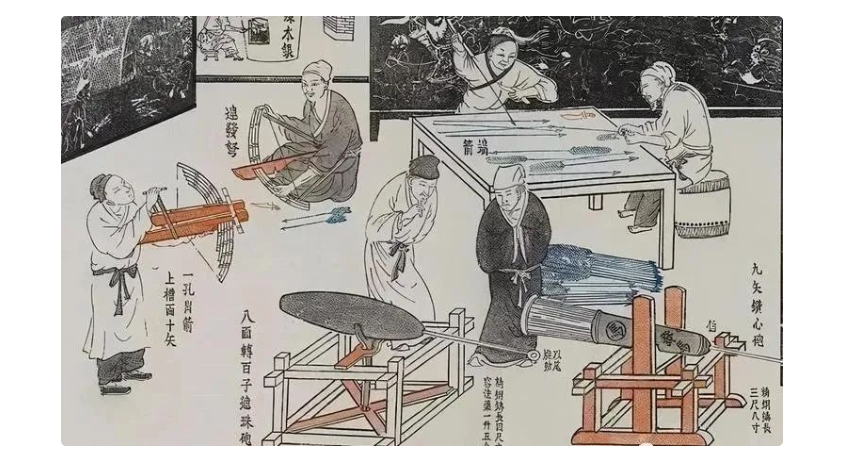
The crossbow has a long range, strong penetration, easy operation, and short training time. It has become the magic weapon of the Song army to restrain the enemy. Therefore, there are many kinds of crossbows, which are more advantageous than bows. The crossbows in the Song Dynasty are divided into two types: single-soldier crossbows and bed crossbows. Single-soldier crossbows are operated by one soldier. There are many numbers and types. They can be used in field battles and city defense. "Wu Jing Zong Yao" records six types of single-soldier crossbows, four of which are larger, such as black lacquer crossbows and yellow birch crossbows, named after materials; there are also two smaller crossbows, the stirrup crossbow and the wooden crossbow. "It is also called Xiaohuang, and its use is particularly good." The stirrup crossbow is a crossbow with a stirrup in front of the crossbow arm, which can test the crossbowman's fighting power. Zhang Kang once tested the crossbowman's fighting power in Weizhou and found that only a hundred people could pull up a crossbow of one stone and two buckets, and the stirrup crossbow was even more difficult. In 1082, the court allocated 20,000 stirrup crossbows from the Fuyan Road Jinglüe Division, indicating that this was a single-soldier weapon produced in large quantities during the Song Dynasty.
"Although wooden crossbows can be used, they cannot last long and are not used much by border troops." Wooden crossbows were a common type of crossbow in the Song Dynasty, but they were rarely used by non-border troops because they were not durable enough. However, at least the rural soldiers in Shaozhou should have been accustomed to using wooden crossbows for a long time. The recorded 㔶-tube wooden crossbow is a new type of crossbow. Unlike ordinary crossbows, the arrows placed in the tube are not easy to shake, making it more suitable for night battles. Although its specific shape is unknown, this special design made it widely used in the Song Dynasty army. On December 22, the first year of Xining (1068), Zhang Ruoshui, the deputy governor of the inner court, presented the Shenbi bow he made. At first, the commoner Li Hong presented this bow, which was actually a crossbow. The body is made of 檿, the 鼰 is made of sandalwood, the stirrup is made of iron, the lance head is made of copper, the horse-faced ivory hair is made of hemp rope and silk is made of string. The crossbow body is three feet and two inches long. The two Mi are each nine inches and two tenths long, the two Shan are each one foot and one inch and seven tenths long, the Yi is four inches long, and the total length is four feet and five inches and eight tenths. The string is two feet and five inches long.
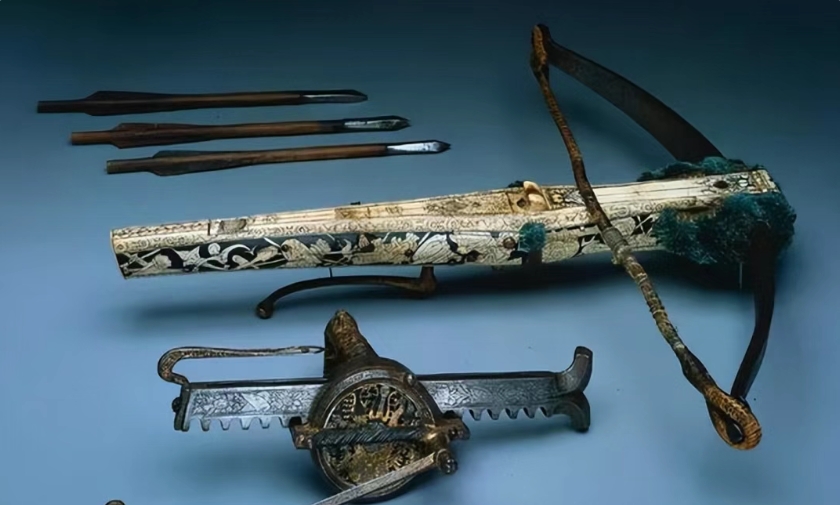
At that time, it was tested in Yujin Garden. It shot more than 240 steps and still penetrated the elm wood and half of the bamboo pole. The emperor ordered it to be manufactured according to the model and presented it to the emperor. Shenbi bow, the army of the Song Dynasty relied heavily on this important weapon, and its parameters such as range and string length were recorded in detail in historical books. However, there are differences between the records of "Mengxi Bi Tan" and other historical materials, and there is also controversy about the creator of Shenbi bow. It is generally believed that the creator of Shenbi bow was the Dangxiang people, but Mr. Peng Xiangqian further inferred that the origin of Shenbi bow was in Xixia, and believed that the "Stirrup Bow and Arrow" recorded in Xixia Wenbing Books refers to Shenbi bow.
Among them, "Stirrup" refers to the metal stirrup in front of the bow arm of Shenbi bow. In short, the Shenbi bow was one of the most important weapons of the Song Dynasty army and made a huge contribution to the victory of the war. The Song Dynasty bow and crossbow were of great importance to the country and had a long history in defending the country. According to "Lingwai Daida", the Southwest Barbarian Crossbow "did not cut arrow grooves, but arranged the arrows on the rod, so it was called a "bianjia crossbow". "The side-frame crossbow" is actually the same type as the "bianjia crossbow" used by the Southwest Barbarians, but the reason why "bian" was written as "bian" is unknown. "Lingwai Daida" and "Rongzhai Sibi" recorded the situation that the Quyang Barbarian Crossbow put arrows on the string and arranged them sideways. The "side-frame" here refers to the situation that the Shenbi bow has no arrow path and needs to arrange the arrow rod on the string. Joseph Needham believed that the Shenbi bow could fire two arrows at a time, but this is inconsistent with other historical materials. There is no mention in the Song Dynasty historical materials that the Shenbi bow can fire two arrows at a time, so Joseph Needham's view may be wrong.
The shape of the Shenbi bow may be different from that in the Song Dynasty. The Shenbi bow recorded in the "Wu Bei Zhi" does not mention "braiding" or "biased", and the Shenbi bow was made to imitate the damaged Shenbi bow of the Yuan Dynasty. The Shenbi bow left in the Yuan Dynasty did not have arrows, so its shape should be different from that of the Song Dynasty. In May of the second year of Yuanfeng (1079), Emperor Shenzong issued an edict to "transfer the Huanghua Broad Flash Bow and Mahuang Crossbow to the various armies." The Mahuang Crossbow is a very important weapon and is placed in a very high position. Among all the bows and crossbows in the Song Dynasty, the Mahuang Crossbow and the Huanghua Broad Flash Bow were transferred to the various armies by Emperor Shenzong of the Yuan Dynasty at the same time, indicating that they were valued by the Song court. During the Southern Song Dynasty, Yang Cunzhong modified the Mahuang Crossbow to make its shooting speed reach three times that of the enemy bow, greatly improving its comprehensive ability. Historical data shows that the Mahuang Crossbow occupies a very high position in the equipment of the Song Army and undertakes the important task of resisting the cavalry of the Northern Dynasty.
The Song Dynasty bed crossbow is a giant crossbow machine, also known as "bed crossbow" or "big crossbow car", which is an important weapon used for siege and defense or on the battlefield. It consists of a base, a frame, a pulley, a bowstring, a trigger and other parts. The bed crossbow has a long range and great power. It can launch accurate arrows, stone bullets, rockets and other weapons, causing great damage to the attacker. The bed crossbow usually requires multiple people to operate, one of whom is responsible for pulling the bowstring, and the other is responsible for aiming at the target and adjusting the angle. The Song Dynasty bed crossbow has superb manufacturing technology, which is not only convenient for disassembly, transportation and installation, but also can be adjusted to varying degrees as needed. The Song Dynasty bed crossbow played an important role in the war and played an important role under the command of generals such as Han Shizhong and Yue Fei. Composite new type of good system, the bed god arm Ma Huangcui "Warfare is a major event of the country, a place of life and death, and a way of survival and destruction. It must be observed." Under the threat of war, military affairs are very important to the country. The Song Dynasty faced severe threats from the north. Bows and crossbows, as the weapons with the highest proportion of equipment, attracted the attention of the ruling class and the army. If a worker wants to do his work well, he must first sharpen his tools. Sharp tools lead to good work, and skilled soldiers lead to strong work. There were many institutions producing military weapons in the Song Dynasty, including the Armor Office, Military Equipment Supervisor, Workshop, Imperial Military Equipment Office and Imperial Military Equipment Bureau, Workshop, and Capital Workshop.
Among them, the Military Equipment Supervisor was the official office that led the manufacture of military weapons, responsible for coordinating the policies of domestic and foreign military weapons, and directly commanded the East and West workshops, which improved the quality and efficiency of military weapon production. Although the Military Equipment Supervisor had changed and reduced its scale several times, it has always played an important role in leading the production of military weapons in the Song Dynasty. In the eighth year of Xining, the Military Equipment Supervisor mentioned in the memorial that compared with the establishment of the Supervisor, the number of military weapons increased by dozens of times, the number of arrows increased by 333,500, and the number of workers increased by more than 17,500. The professional military weapon production institutions in the Song Dynasty included two major systems: the capital and the local system. In the capital, the two workshops in the north and south and the bow and crossbow institute were responsible for the production of weapons, military equipment, flags, oil clothes, rattan lacquer and other items. Among them, the South and North workshops have 51 workshops, and the Crossbow Court has crossbow pile workshops and other units. The Imperial Arsenal is in charge of materials, manufacturing and personnel, and has Wanquan workshops and other units. In addition to the capital, each state has a workshop to produce, responsible for the production of tasks for the state or the court. The Duzuoyuan is responsible for the production of military equipment within a certain range, totaling 41. The Duzuoyuan has production units of varying sizes, which are not as large as the military equipment workshops in the capital.
These institutions have high productivity and excellent quality, and play a key role in the military production of the Song Dynasty. During the Southern Song Dynasty, the institutions that produced military equipment included two major systems: the capital and the local system. In addition, the Southern Song regime allowed the troops to manufacture weapons internally to facilitate the front-line troops to fight the enemy. This approach is undoubtedly very beneficial, because the military craftsmen in the troops can adjust, transform or even manufacture new weapons according to actual combat conditions. The enemy-killing bow made by Han Shizhong is such a practical example. When Yue Fei was in urgent need of bows during the war, he directly sold all his property except the gold granted by Xuan, and used it to pay the military craftsmen to make 2,000 bows. The Southern Song regime faced huge military pressure from the Jin Kingdom in the north, so it allowed the troops to manufacture weapons internally, skipping the steps of asking for instructions, making, and transferring, which made it easier for the front-line troops to fight the enemy.
Conclusion In ancient China, bows and crossbows have always been one of the most important equipment in the army, and rulers of all dynasties have attached great importance to them. With the development of productivity and continuous improvement of technology, the manufacturing process of bows and crossbows has become more and more advanced, and their lethality has become more and more powerful. The Song Dynasty faced severe foreign threats and lack of war horses, so it paid great attention to the strengthening and improvement of bows and crossbows. Under the tactics of "controlling cavalry with strong bows and crossbows" and the strategy of "focusing on defense", bows and crossbows in Song Dynasty weapons have a very high status.
The Song Dynasty, with infantry as the core, did its best to tap the potential of infantry bows and crossbows, and successfully brought them to the extreme in war. It can be said that the Song Dynasty was the peak period for bows and crossbows in ancient China.